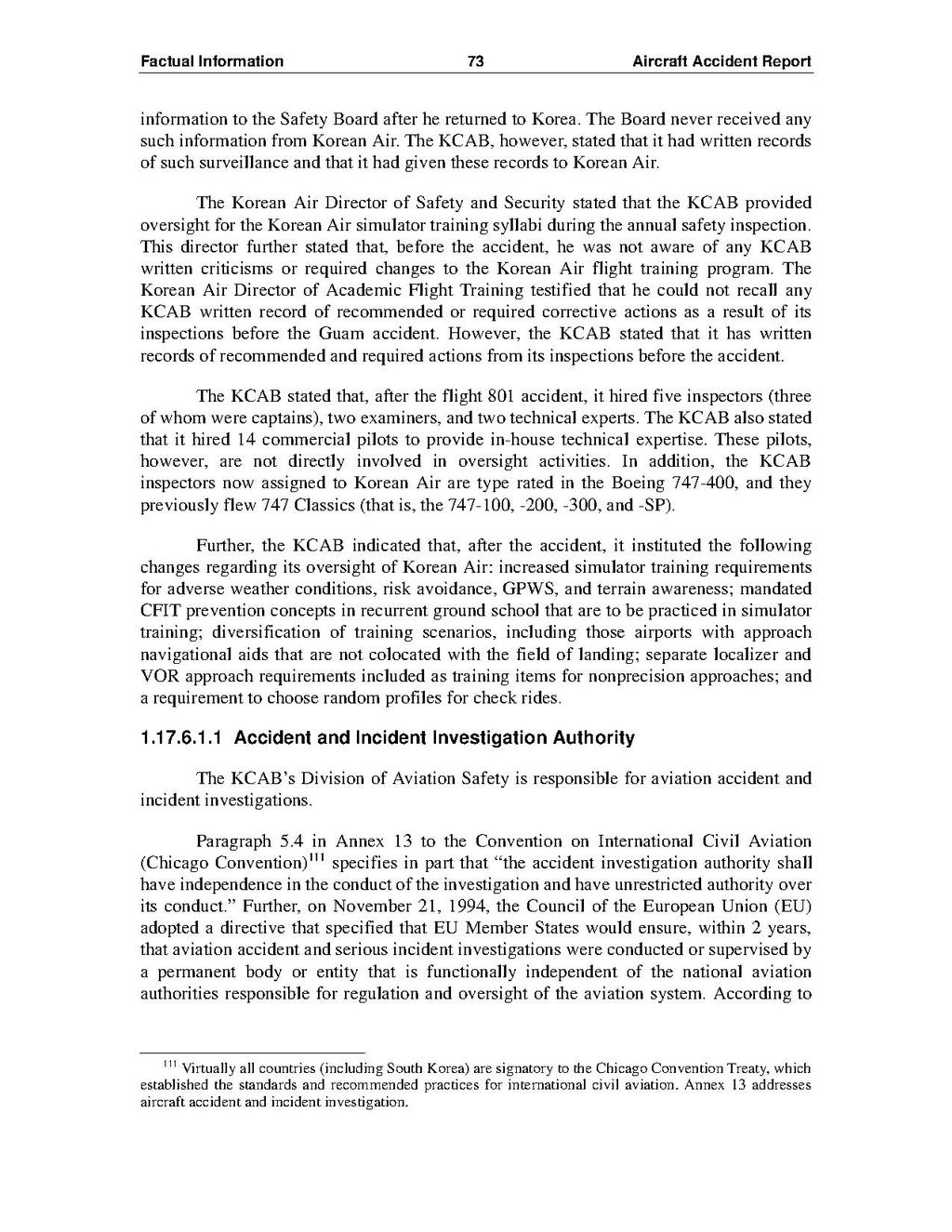information to the Safety Board after he returned to Korea. The Board never received any such information from Korean Air.
The KCAB, however, stated that it had written records of such surveillance and that it had given these records to Korean Air. The Korean Air Director of Safety and Security stated that the KCAB provided oversight for the Korean Air simulator training syllabi during the annual safety inspection. This director further stated that, before the accident, he was not aware of any KCAB written criticisms or required changes to the Korean Air flight training program. The Korean Air Director of Academic Flight Training testified that he could not recall any KCAB written record of recommended or required corrective actions as a result of its inspections before the Guam accident. However, the KCAB stated that it has written records of recommended and required actions from its inspections before the accident.
The KCAB stated that, after the flight 801 accident, it hired five inspectors (three of whom were captains), two examiners, and two technical experts. The KCAB also stated that it hired 14 commercial pilots to provide in-house technical expertise. These pilots, however, are not directly involved in oversight activities. In addition, the KCAB inspectors now assigned to Korean Air are type rated in the Boeing 747-400, and they previously flew 747 Classics (that is, the 747-100, -200, -300, and -SP).
Further, the KCAB indicated that, after the accident, it instituted the following changes regarding its oversight of Korean Air: increased simulator training requirements for adverse weather conditions, risk avoidance, GPWS, and terrain awareness; mandated CFIT prevention concepts in recurrent ground school that are to be practiced in simulator training; diversification of training scenarios, including those airports with approach navigational aids that are not colocated with the field of landing; separate localizer and VOR approach requirements included as training items for nonprecision approaches; and a requirement to choose random profiles for check rides.
1.17.6.1.1 Accident and Incident Investigation Authority
The KCAB's Division of Aviation Safety is responsible for aviation accident and incident investigations.
Paragraph 5.4 in Annex 13 to the Convention on International Civil Aviation (Chicago Convention)[1] specifies in part that "the accident investigation authority shall have independence in the conduct of the investigation and have unrestricted authority over its conduct." Further, on November 21, 1994, the Council of the European Union (EU) adopted a directive that specified that EU Member States would ensure, within 2 years, that aviation accident and serious incident investigations were conducted or supervised by a permanent body or entity that is functionally independent of the national aviation authorities responsible for regulation and oversight of the aviation system. According to
- ↑ Virtually all countries (including South Korea) are signatory to the Chicago Convention Treaty, which established the standards and recommended practices for international civil aviation. Annex 13 addresses aircraft accident and incident investigation.
